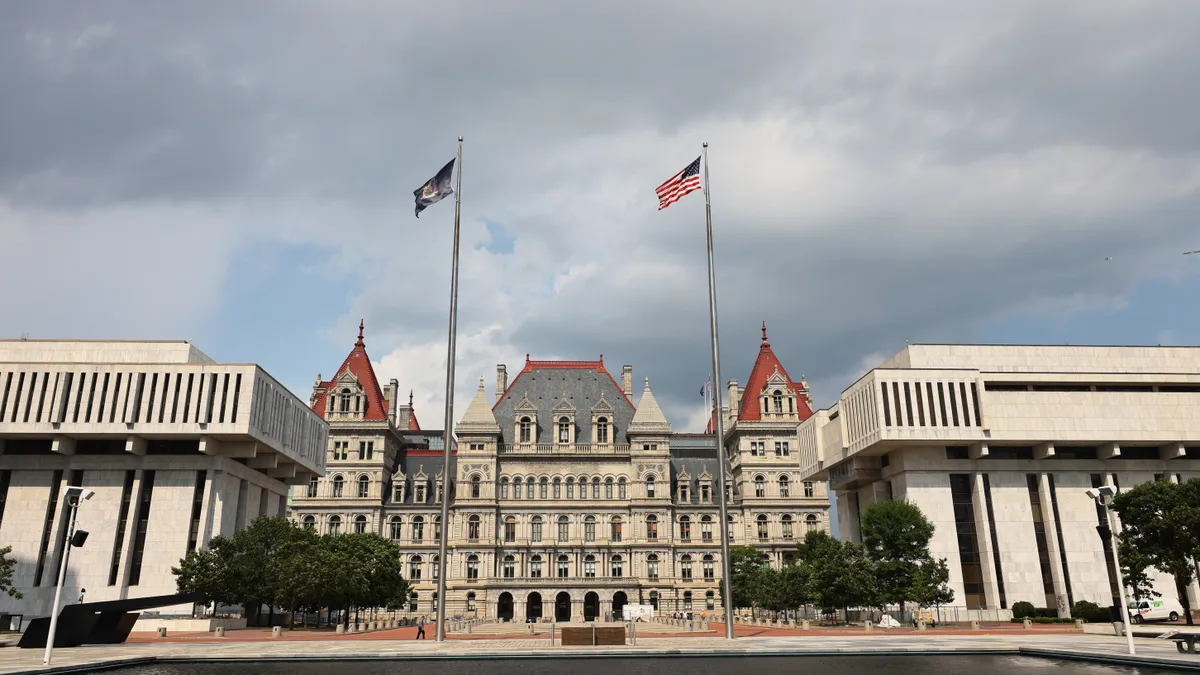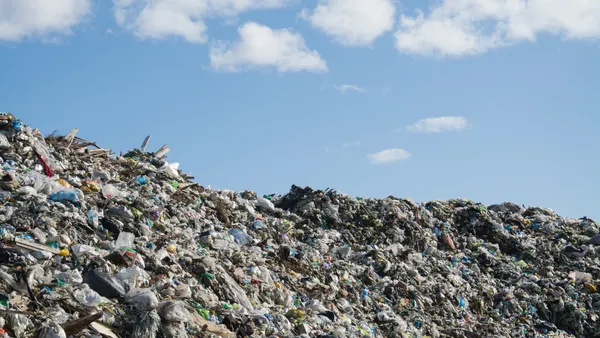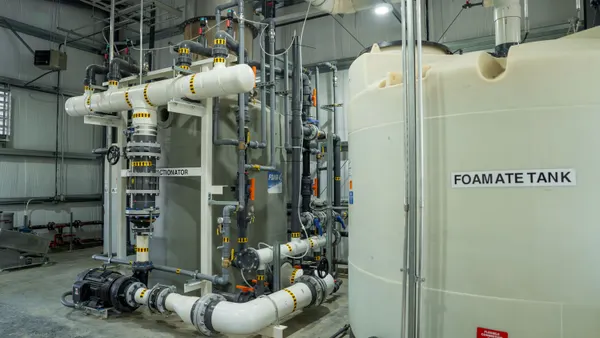Some waste and recycling facility operators applying for certain permits in New York will be required to consider a facility’s cumulative impacts on disadvantaged communities as part of the environmental permitting process now that Gov. Kathy Hochul has signed S8830 into law. It will go into effect this June.
Some permits or permit renewals already required applicants to write an environmental impact statement, but the new law updates New York’s State Environmental Quality Review Act to require those statements to detail whether a project “may cause or increase a disproportionate or inequitable pollution burden” on disadvantaged communities. The law will also require the Department of Environmental Conservation to assess those communities’ existing pollution issues and prepare a report. The law uses the state’s draft definition of “disadvantaged communities” created as part of New York’s Climate Act.
Environmental group WE ACT for Environmental Justice called the law “landmark legislation in addressing environmental racism,” saying disadvantaged communities are more susceptible to cumulative impacts, often because those residents live in areas where multiple industries are operating at the same time.
Sponsors said in the bill summary that the law is meant to reverse the “inequitable pattern in the siting of polluting facilities in disadvantaged communities.” Previous regulations did not specifically take cumulative impacts of pollution into account when approving certain facilities, which WE ACT said was akin to “treating them as if they were the only source of pollution that residents will have to endure.”
Policy experts think more such bills could soon be introduced in other states. New Jersey’s EJ law, passed in 2020, also requires certain facility operators to consider EJ impacts when applying for permits, and many in the waste industry consider it the country’s most notable and detailed EJ law.
Other states that recently considered legislation to address cumulative impacts were Rhode Island and Illinois, according to a bill assessment from the National Caucus of Environmental Legislators. California passed a law in 2022 to create an environmental justice office within CalRecycle.
Activists in New York hope they now have added traction to fight pollution in their neighborhoods, but codifying environmental justice efforts into state law is just one step, said state Sen. Andrea Stewart-Cousins, who sponsored the bill. “Our words are only as good as our actions,” she said in a statement.
The U.S. EPA last week also acknowledged the importance of measuring and regulating cumulative impacts. It published an update to its legal tools guide to describe how the agency can identify, measure and regulate cumulative impacts of pollutants in air, water and waste management programs. The EPA is also disbursing $100 million in funding for EJ initiatives through the Inflation Reduction Act.
Addressing cumulative impacts is an important part of the Biden administration’s overall environmental justice plan, the EPA said in a news release this week, because it acknowledges how combined exposure to a range of environmental “stressors” can increase a community’s vulnerability to health and environmental hazards, particularly “underserved populations, including communities of color, Indigenous people, and low-income communities.”











